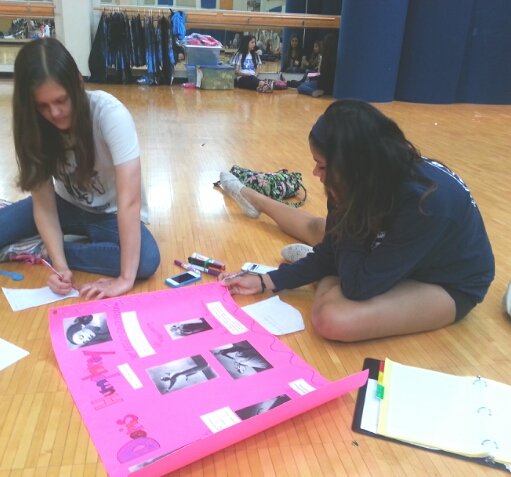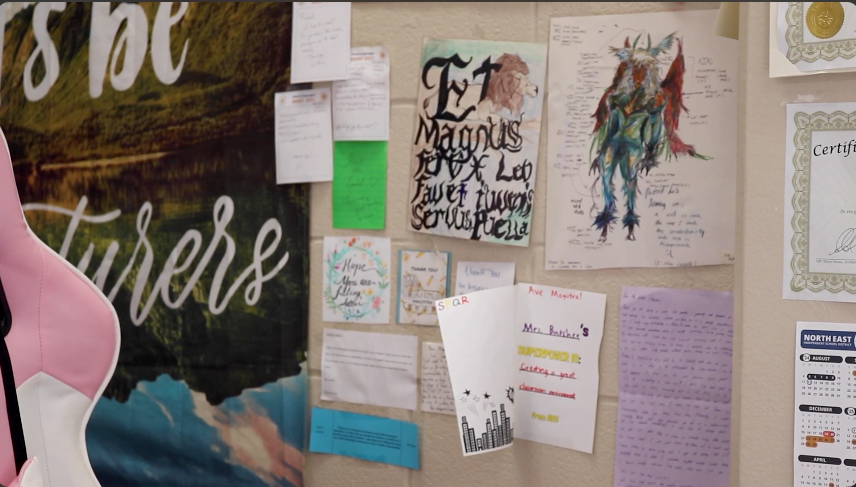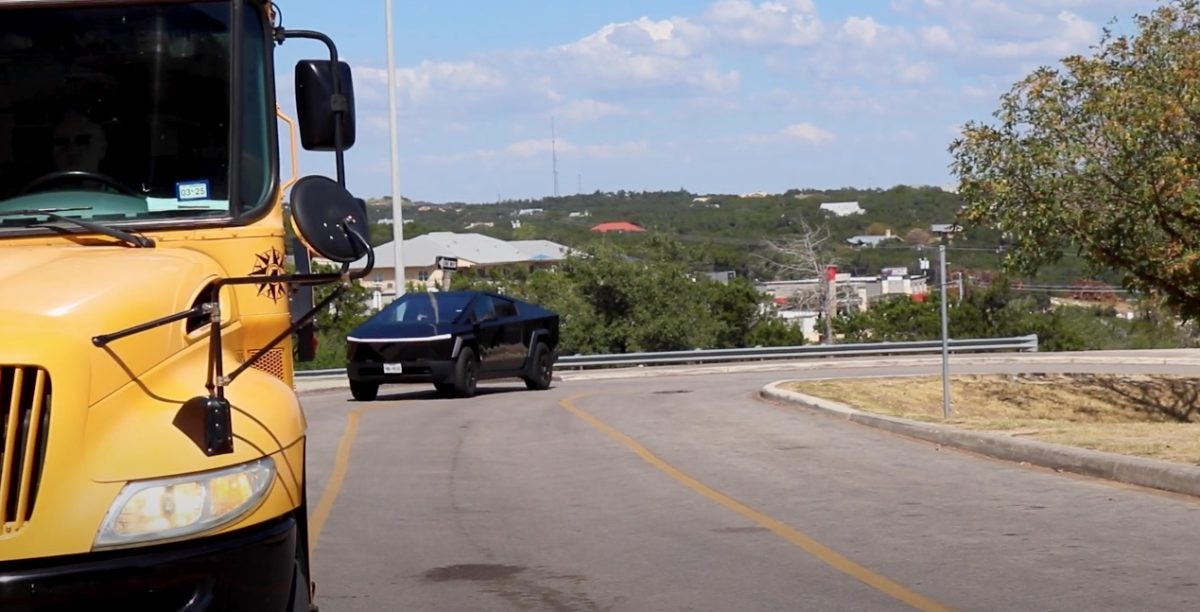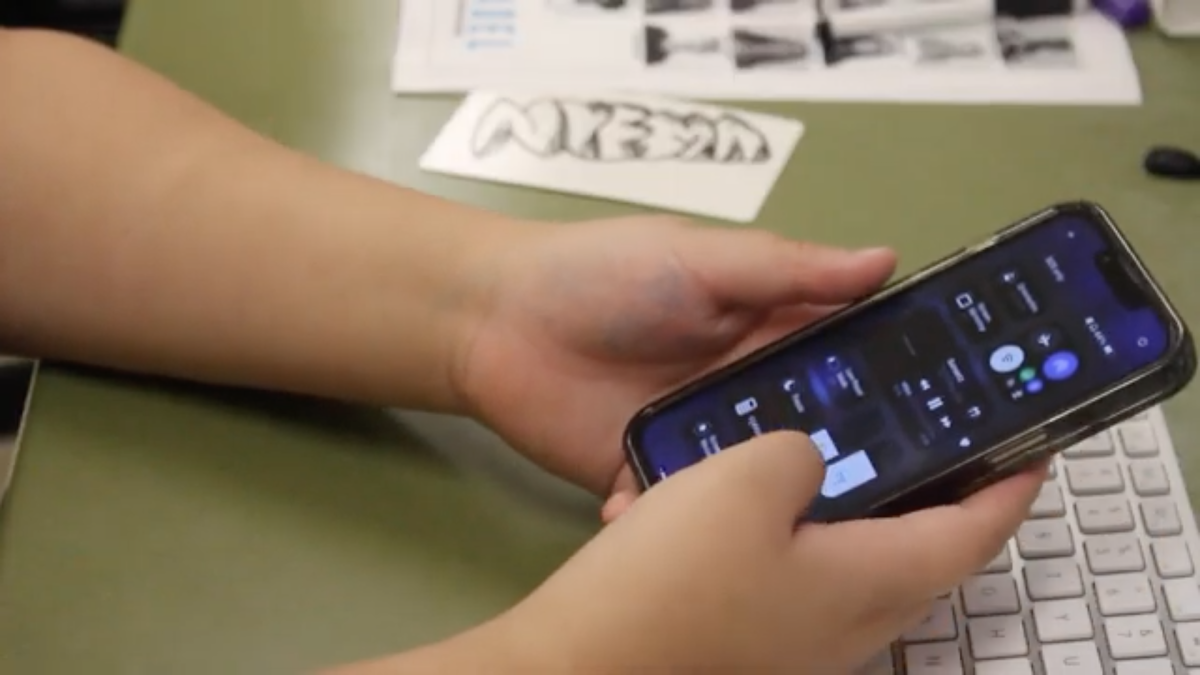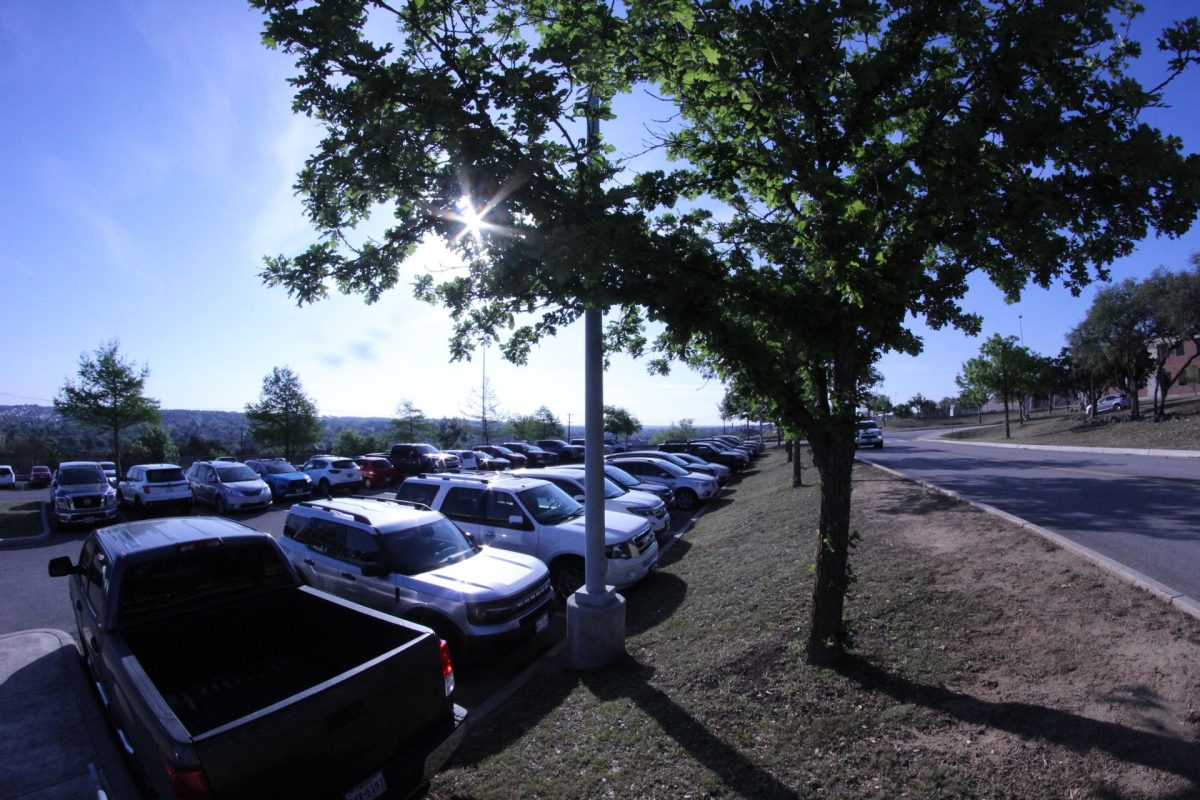by Monica Smith | staff writer
Every student knows that, with the end of the school year approaching, there’s also a group project bound to be assigned in every class. But with half the school being online and the other half in-person, the projects are going to be looking a bit different this year.
“I like doing projects because they are a lot less stressful than the regular assignments,” junior Ioannina Garcia said. “It’s just not as serious and you can be more creative with it.”
If what students need is a release from all the quizzes, all-nighters pulled studying, exams, and lengthy homework assignments — final projects are the perfect way to supply it.
“I’m a huge fan of the projects that showcase what students enjoy–either their artistic talents or their willingness to film goofy scenes or music videos,” English teacher Caroline Hagan said. “It’s fun to see their personalities shine through in a more relaxed setting.”
The challenge of getting peers to collaborate during group projects is more relevant than ever.
“I think it’s a bad idea to do group work through Zoom just because of how hard it is to get people to actually do their work,” Garcia said. “It’s already hard getting people to do stuff in person, but with online, all they have to do is turn off their camera and mute themselves.”
But despite the obstacle, Hagan is determined to motivate students to participate.
“I love the collaboration that comes from group work, so in lieu of using groups I’ve focused more on encouraging the classroom discussion, so students still have an ability to hear one another’s perspective on ideas then work individually to complete an assigned project,” Hagan said.
To complete an entire project, group work involves assigning separate tasks individually, which could possibly be a way for students to still do group work but without the complicated structure of it.
“I would maybe have the students work on one element of a project at a time with specified due dates, so it is not overwhelming for the student to tackle the project individually,” Hagan said. “However, I think this would vary significantly across disciplines—I’m certain a group project for Math would not look the same as a group project for English.”
To keep things organized, Hagan would group online learners and in-person learners separately.
“I wouldn’t want to deal with the issue of having in-person students trying to coordinate with online peers—that’s too much of an unnecessary challenge for them,” Hagan said. “During class, it would be a matter of how well they utilize the breakout rooms or in-person group work”
The Zoom breakout rooms are a substitute for real-life group meetings, but they aren’t nearly as effective as in-person.
“I don’t think teachers realize that when they put us in breakout rooms nobody is actually talking to each other,” Garcia said.
But, in fact, the teachers do realize it — they just can’t do much about it.
“If anything, as a teacher it’s a challenge (and a bummer) to not get to hear group conversations all at once like I would in a normal setting,” said Hagan. “My students this year have been amazing with breakout rooms. Anytime I would pop into a room’s discussion, they really took ownership of the role to collaborate with one another. However, it would be a challenge to not be able to monitor progress.”
In the past, Hagan was able to do projects that involved live presentations displaying group work but this year it’s obviously limited in terms of what can be done live in class. Although that aspect of the project may be different, there are bound to be creative alternatives in terms of online ideas after working in a totally virtual setting this year.
“I think there very well could be teachers savvy enough to make group work achievable for the end of this year—Johnson has quite an array of specialties among the staff,” Hagan said.


